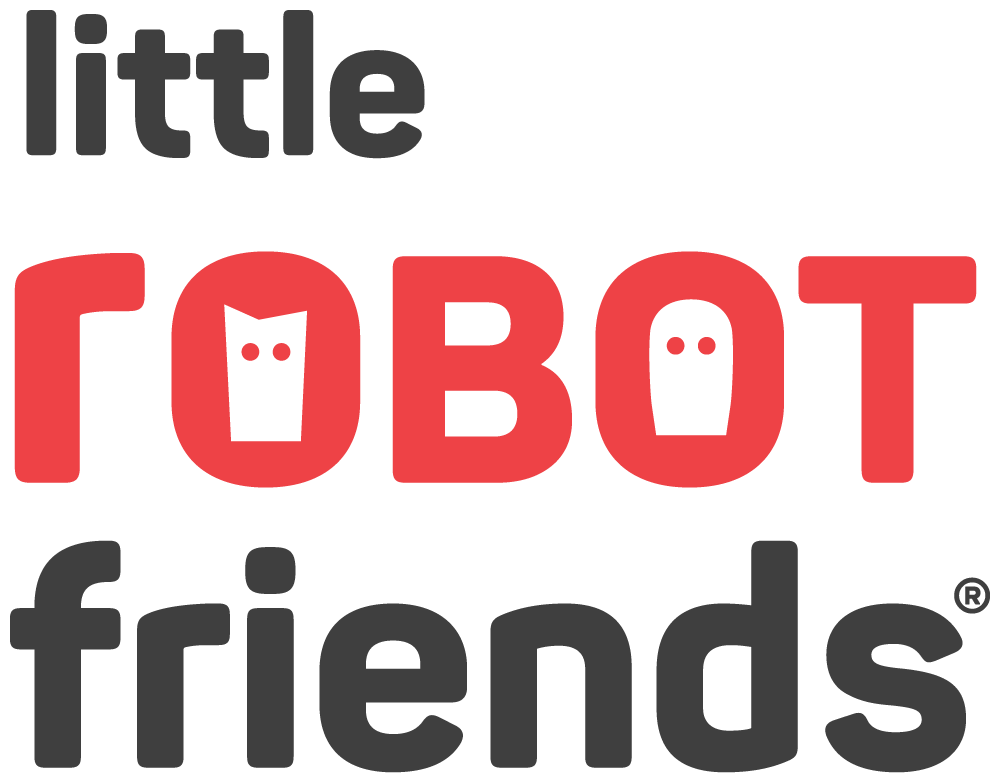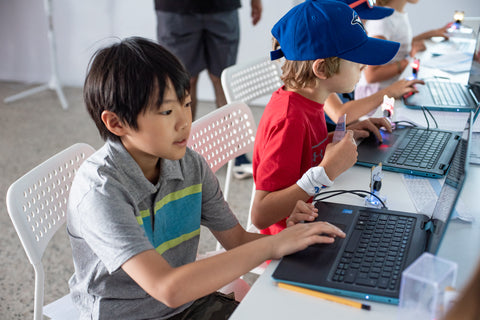
Have you heard the saying... 10,000 hours of practice will make you a pro in anything?
As you might know, here at Little Robot Friends we teach kids all about technology and how to code. We’ve been running coding classes from our little shop on the Danforth for over two years now. We’ve had the opportunity to observe how kids interact with technology and learn more about the ways they learn.
It’s hard to believe but when we started this journey we even tried teaching kids how to code before they knew how to type! How can a coder code if they don’t know how to type? ![]()
The kids starting our programs weren’t just struggling with typing though, for many 6 and 7 year olds it was their first time on a computer. They weren’t comfortable using trackpads and didn’t know how to launch an app. We had to go all the way back to the basics. Our educator team had a sit down to re-evaluate our curriculum and began to wonder… where do kids learn to type? Is it in school? Is it at home?
Today, typing is not part of the Ontario education curriculum despite studies that show how it can positively impact literacy, writing, and psychomotor skills! In 2016-2017, TDSB (Toronto District School Board) implemented a Keyboarding Pilot Program across 11 elementary schools to evaluate whether it should officially be integrated into the curriculum. Students who participated in the pilot improved their typing accuracy and speed, and overall confidence. They even thought it was fun! So, why aren’t we teaching keyboarding in school?
“I think all students from grade 3+ should go to typing class. […] Before I used typing class, I was slow at typing. […] The games are fun and educational, too. If all grade 3+ students participated, we would build up our endurance and be really good at typing.”- Girl, Grade 3 (TDSB Keyboarding Pilot Program Report)
¼ of the educators who were surveyed believed typing should be taught starting in primary grades. However, after the study, fewer educators thought it should be taught separately and instead be integrated with other subjects. As a result of these findings, the Board’s current position on typing is that they’re in support of keyboarding as a skill, but leave it up to individual educators to decide when it is necessary to teach. And so, it becomes luck-of-draw for students.
The thing with typing (and most things in life) is... if you don’t practice it then it is very difficult to get better. Hopefully at some point typing will become a regular routine in schools. There are also free resources online if you want to get your kids started at home (we’ll link it below).
Typing is to coding as knowing the alphabet is to reading. As adults, we take touch typing for granted, but if we didn’t know how to use the keyboard, a very simple and mundane task like writing an email would become an enormous time waster.
That little confidence boost our kids get from learning how to type has really helped them excel further in our coding classes. They aren’t getting deterred by how long it will take them to type the password so they can log onto the computers anymore (bye bye hunt and peck method). And we must tell you, it’s the best when kids get all wide-eyed when they learn how to use a keyboard shortcut like [CMD + C] to copy blocks of code. With keyboarding skills, they can be more productive and focus on the task at hand, like coding robots to sing and making cool stuff!
If you’re interested in reading more about the TDSB Keyboard Pilot Program, click on this link here.
When we transition our kids from learning how to code with blocks to learning with text-based coding like C++ or Python (*ahem* real code), now we integrate keyboarding drills into our classes so that they get the benefits of practicing as well as understanding first hand why typing is an important cornerstone to unlock cooler, bigger abilities.
Learn more about our Coding Club - Coder level here.
Resources:

